Time to recognise.
While Flying Nun and “the Dunedin Sound” has firmly cemented itself in the history books of New Zealand music, and acts as a dog whistle for music geeks and fanboys around the world, music from South Auckland hardly gets the same recognition, despite its influence and commercial success over the years.
Volume South, which opens today at MIT’s Manukau campus, aims to remedy that by recognising the artists and scenes that helped to shape South Auckland music.
Items from the personal collections of artists such as OMC, Savage and Ardijah are included, their stories told through photographs, handwritten lyrics, awards, musical equipment and memorabilia.
Among some of the items are a Dawn Raid sports jacket, a mixer from P-Money, one of Phil Fuemana’s Tui awards and a tape recorder from the Otara Music Arts Centre, which celebrates its 30th anniversary this year.
One of DJ Sir-Vere’s early mixers that he covered with stickers is now encased in a glass display box.
He describes South Auckland as a “creative tornado” that he was swept up by when he was a young turntablist living in Papakura. He was on the board of advisors for the exhibition, and last night wore his SWIDT ‘Stoneyhunga’ jacket to the launch.
“The streets will dictate what’s hot next – the people that matter are the people of South Auckland because they will tell you what’s hot,” he says.
Volume South was borne of Auckland Museum’s Volume: Making Music in Aotearoa exhibition, and was developed by the museum in collaboration with the New Zealand Music Hall of Fame and MIT.
Here, we speak to four artists whose items are included and whose work has helped to shape the sound of South Auckland.
DJ SIR-VERE (Phil Bell) - Mixer.
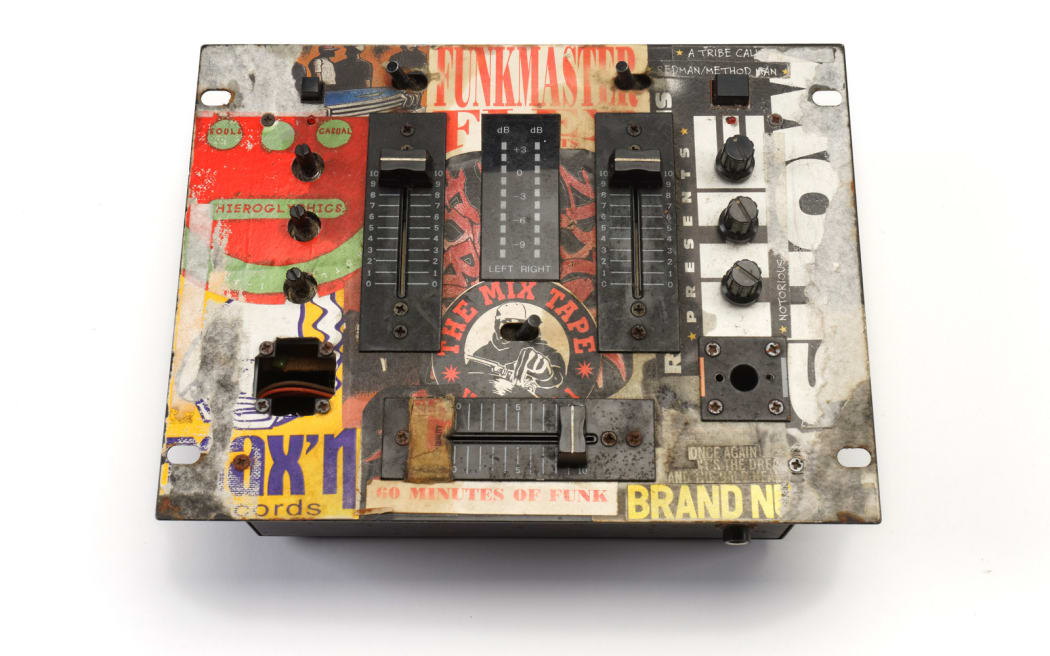
DJ Sir-Vere’s Gemini PMX 15A Scratchmaster mixer late 1990s. Photo: Auckland Museum / Mixer on loan from Phil Bell
I remember it costing a lot of money. And at the time maybe it was $400? But if it was late ‘90s, that must be a couple of thousand dollars, right? So I remember it being a very big investment. I also remember it being really reliable. So, as a tool of trade a mixer is the heart and soul of what you do, and it was really robust.
These things are like a boxer’s gloves or a singer’s microphone, you know what I mean? It’s inherently like another part of me.
I remember in Newmarket, in Auckland City, I did a gig that they didn’t pay me and then afterwards they left us out on the street. So they didn’t pay me or the other guy, the main DJs. They left us out on the street at four in the morning, with two boxes of records, turntables and that mixer and I remember trying to figure out how to get it to Onehunga, where I was living.
I dropped it right on the corner and I was devastated, because I didn’t have a bag to put it in. These things are like a boxer’s gloves or a singer’s microphone, you know what I mean? It’s inherently like another part of me.
I decided to, out of my own infinite wisdom, to attack this thing with every sticker. What it does tell you, is it gives you a really good indication of the time. That one on the right is The Show, which is a movie. Funkmaster Flex’s first mixtape is on there, underneath the up faders is a Joint Force sticker. Joint Force is DLT, MC Slave and Otis, who are all now personalities and historically famous in their own right, but it’s pretty cool for it to be on there. This is a Souls of Mischief, Hieroglyphics sticker, and this is a New York label. To put it into context, at the time it would have been pretty cool, today it just looks like I abused it.
There are a good two-and-a-half years in that thing, which is amazing. What it is also is a bit of a springboard in my career. After this mixer was disposed of, I had a career. So I would have moved onto something much bigger and better.
OMC - Tapa cloth and journal.
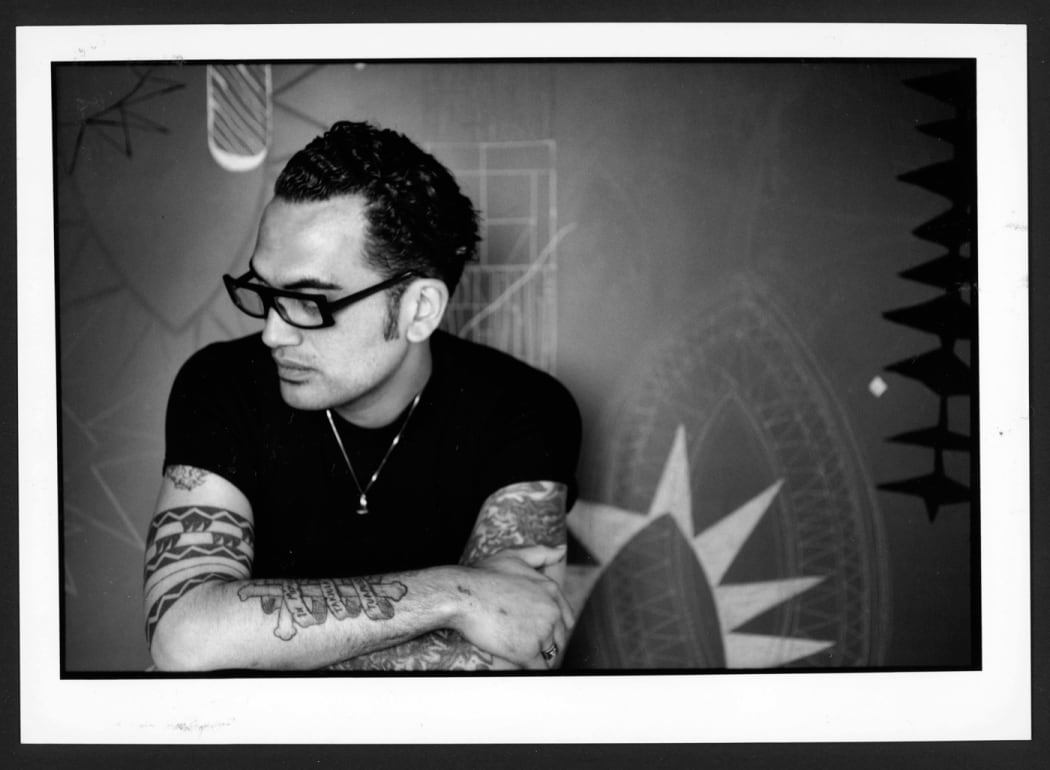
Pauly Fuemana Photo: Deborah Smith / Courtesy of Simon Grigg.
Kristine Fuemana (Pauly’s widow) - The tapa is actually Samoan, so in Niuean it would actually be a hiapo and Paul’s uncle had given it to us years and years ago. It was a very big piece and he had always said that when he passed away he always wanted to be wrapped in it. So when he did actually pass away we did divide it. It was huge, it was obviously wall size. So he is wrapped in it and then I divided the rest up for each of the children.
It was always on our wall at home covering a hole. I was just saying to [the exhibition curator] Esther that it is hung so beautifully here. At home it’s got pins in it, which is why that’s all ripped.
[The lyrics in the journal] was some awful song he was writing when we met and my daughter is horrified. I don’t even know how he wrote what he wrote, to be honest. You look through there and you can see snippets of most of his songs, so you’ll get a line out of there that was in something that was released in some of his later stuff.
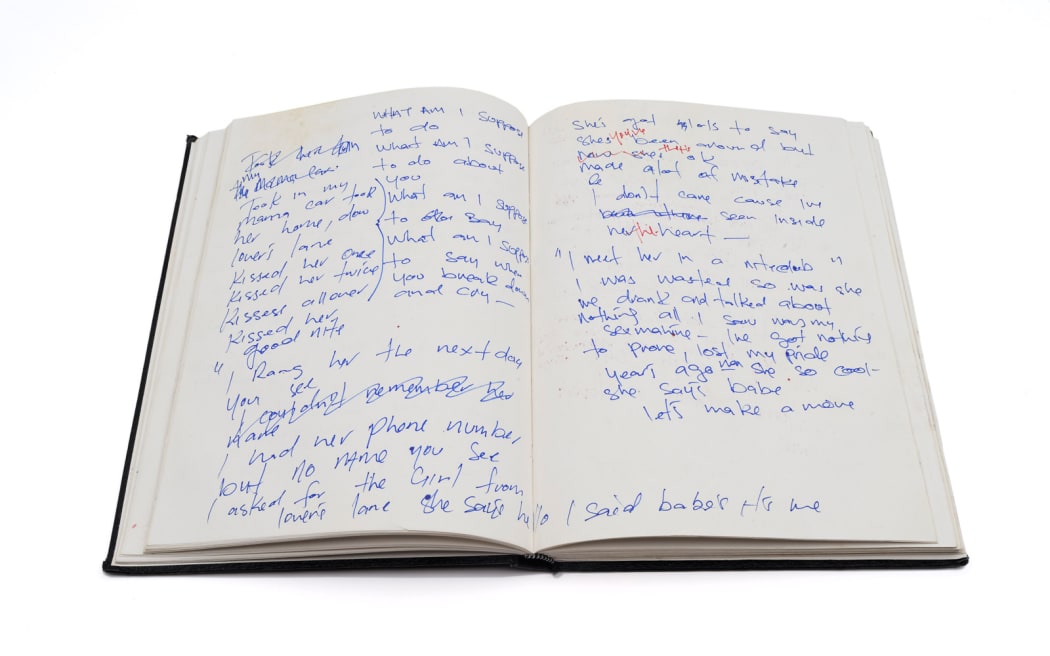
Pauly Fuemana’s journal mid- to late 1990s. Photo: Auckland Museum / Journal on loan from Kirstine Fuemana.
We don’t have an awful lot of Paul’s stuff left. I don’t hang on to a lot of memorabilia.
I think out here, it’s just the most misconstrued area, ever. I was probably guilty of it and it breaks my heart that people probably don’t see the richness of it and how kind people are. It’s amazing. This community in particular, it has almost been stuck in a time warp. It’s moving, but the whole hip-hop thing is still very south… I just think they’ve got so much to be proud of.
ARDIJAH - Stage costume (the blue jacket Ryan Monga is wearing on this album cover).
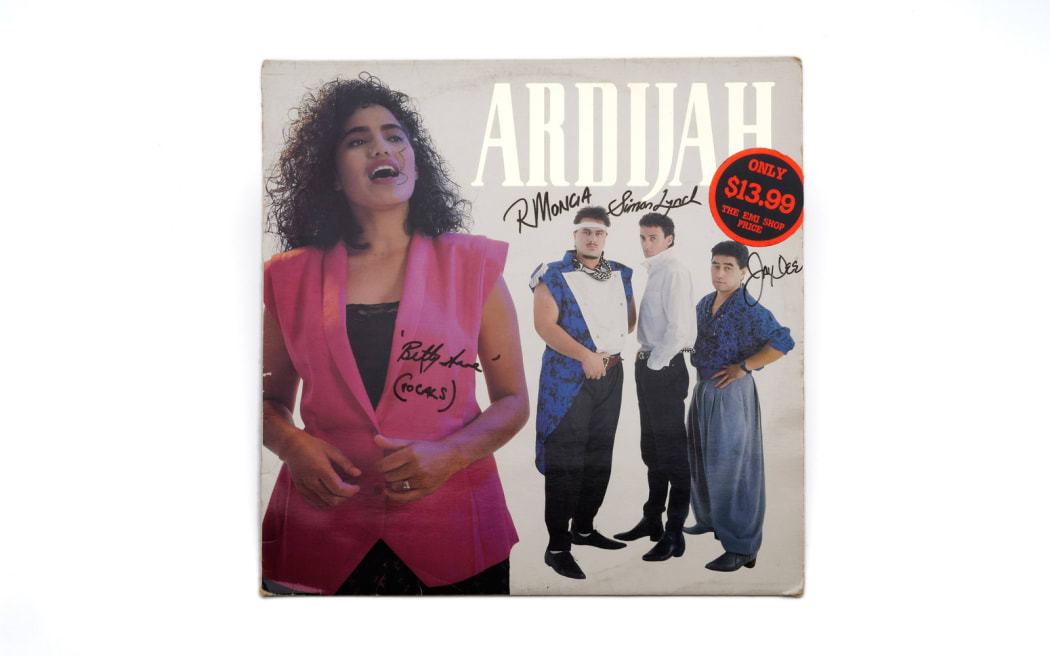
Ardijah 1987, Warner Bros Music. Photo: Auckland Museum / Album cover on loan from Ryan Monga.
Ryan Monga - It’s part of my uniform I used to wear in the ‘80s. Back then you could wear uniforms and it just so happened I kept mine nice and tidy and there’s no moth holes eaten in there.
It’s been in a suit bag and just tucked out the back, I always had respect for it, tucking it inside the wardrobe and hanging it in its own area and when I pulled it out, I was like, it’s still in good knick!
I wore that most times. We had different uniforms, but I like that one the best. There was a band uniform, but everybody also made their own look, but that was mine. The coat tails, that kind of army jacket/Sergeant Pepper’s-type thing. I liked that look. And it went well with funk.
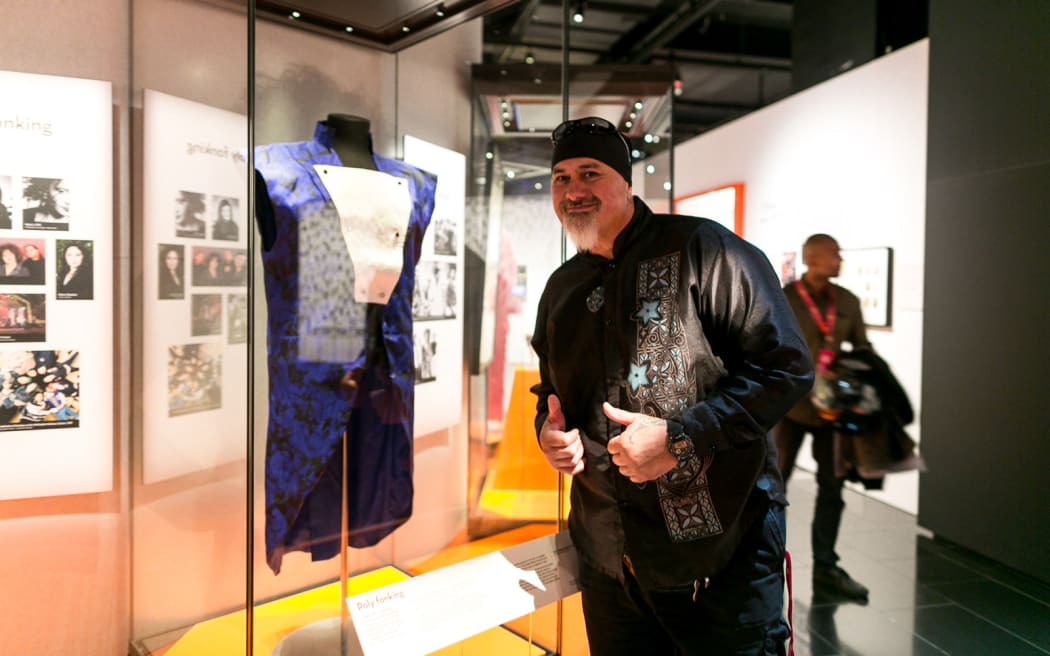
Ryan Monga with his blue suit at Auckland Museum's Volume exhibition. Photo: Auckland Museum
I grew up here. Otara. We came in from Sandringham in Auckland and shifted out here to the promise land back in the ‘60s. South Auckland, it has been our home all of that time.
I think for me, what inspired me to get up and out performing was … the news reports used to talk bad about us all of the time, you know? I thought, who are they talking about? There’s a lot of talent here.
We had our inspirations in the beginning and then we got out and started playing music straight out of school and then it snowballed and then you had all of the young guys – like the Dawn Raid guys, they were still young fellas, listening to us rehearsing down the street. So once we got on TV, then it just changed the whole thing. If we can make it from Otara, South Auckland, then the world is our oyster.
This exhibition is a great acknowledgement for our South Auckland kids going through the hardship that there is a way out. To have our photos and our stuff on display, that’s unheard of in our community. It’s just beautiful.
VALLKYRIE - Necklace.
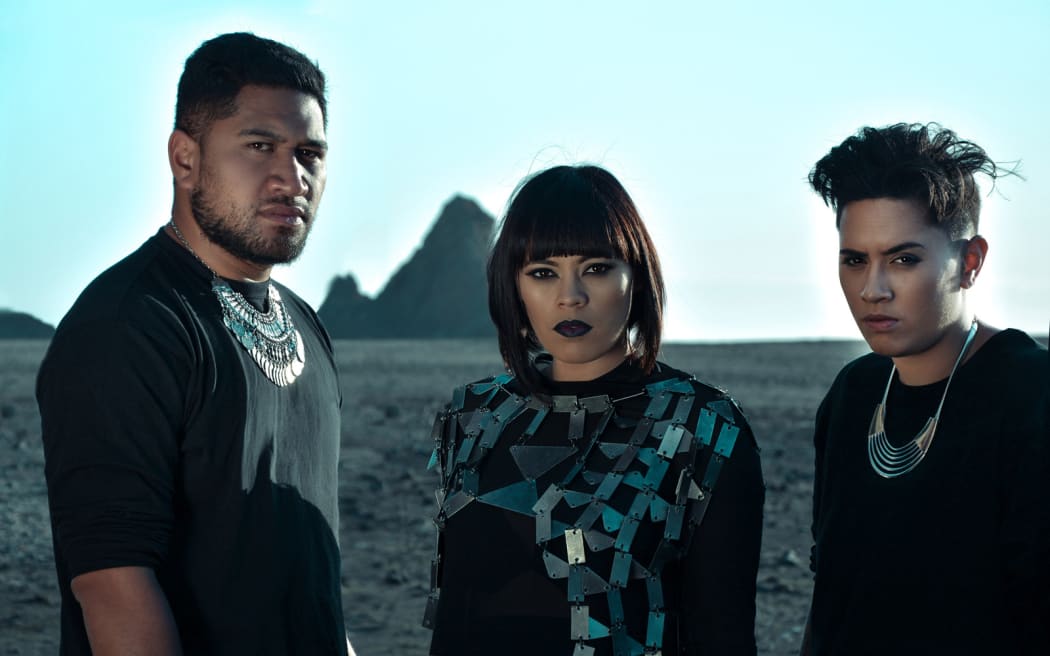
Vallkyrie band members Brandon Haru, Omer Gilroy and Rebel Reid. Photo: Sylvia Toia
Rebel Reid (guitar) - That is our steel chain. It was made by a fashion designer Phillip Hawkins, he worked for Zambesi, now he’s around the world doing his fashion run. He gave it to us because he heard about the music video we were filming at the time called ‘Steel Heart’. We needed something that was armour for females and our song was about finding strength for breast cancer, so we needed a strong iconic piece.
Our music is quite rock orientated, but our Southside roots give us a real brown feel to our commercial sound, eh?
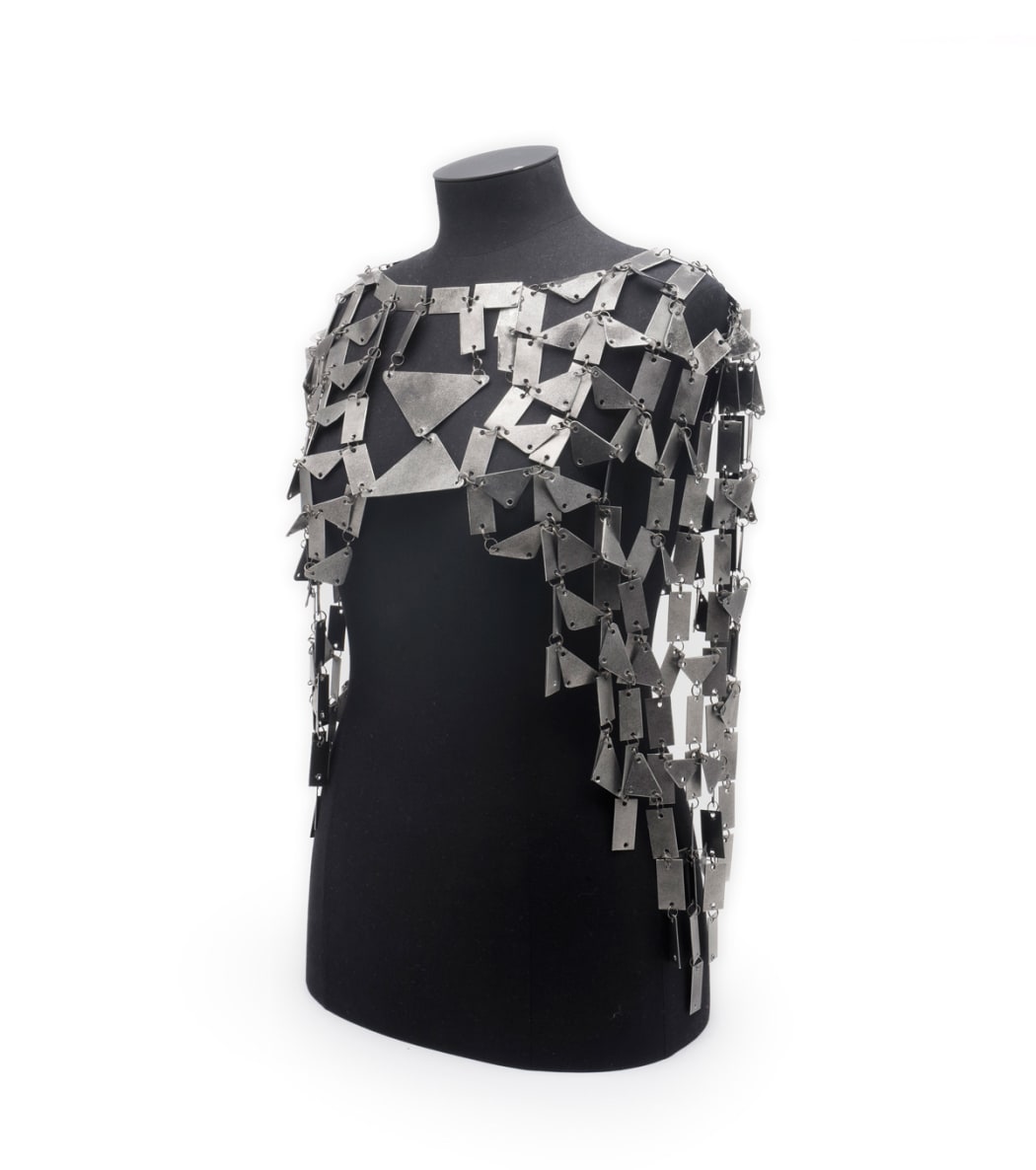
Vallkyrie’s Steel Heart necklace, made by Phillip Hawkins. Photo: Auckland Museum / Necklace on loan from Vallkyrie.
Brandan Haru (drums) - Our music is very drum heavy, I have realised (to make some sort of loose summary about it), and being from the predominant Pacific hub of Auckland, as kids growing up we were always exposed to different island music and also music from around the world, from America, from Europe and the UK, whether it be roots, soul, reggae or hip hop or rock.
*Volume South opens today and runs until 31 August at MIT’s Manukau Campus.

